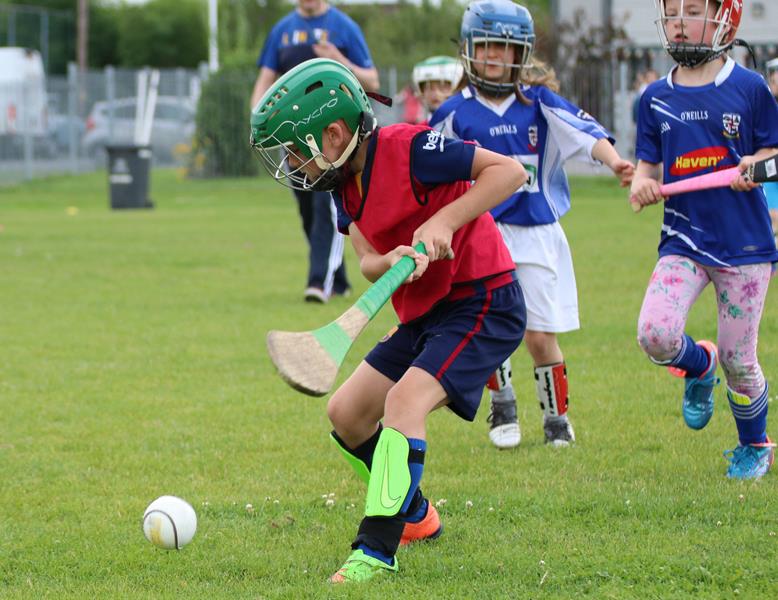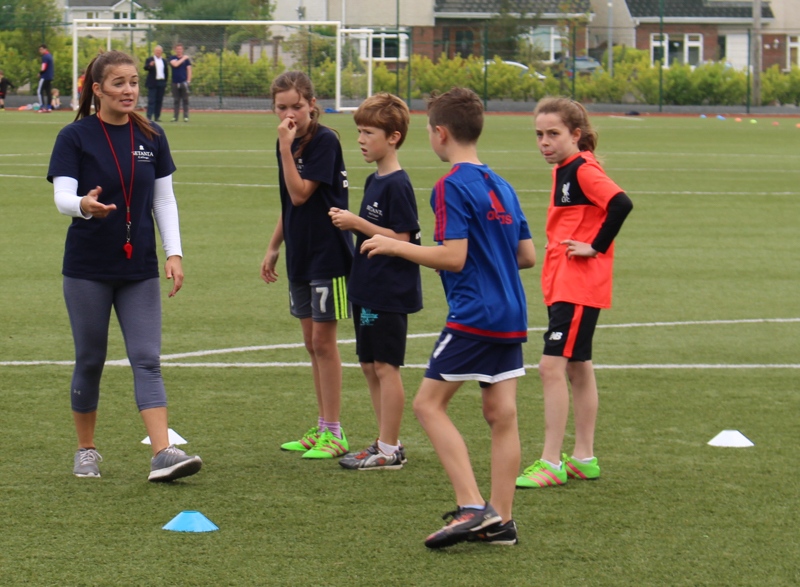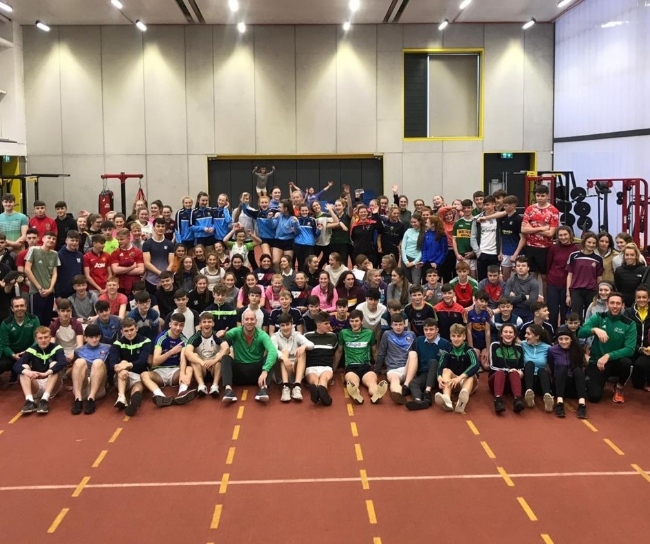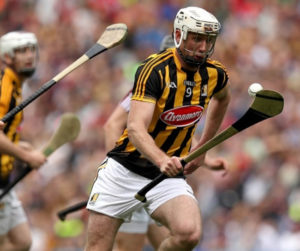With the average age of senior inter-county teams becoming lower and lower, I’ve decided to focus on the role of Strength and Conditioning (S&C) for an up-and-coming player. The demands on playing senior inter-county are increasing year on year and you need to be in good physical condition to withstand the training regime. A young 19-year-old coming onto a senior team is a big ask on the physical load but, if they have a decent foundation laid in S&C it can help with injury prevention and surviving those physical elements in your first couple of years. My first time lifting weights started at 20 years of age and was quite sporadic for a few years due to being uneducated on the benefits and also normally playing late into the year with Ballyhale Shamrocks in club championship. There were a lot of myths going around of weights making you slow and offering no real value. If I could go back to the time of being a teenager I would implement a few simple exercises into a strength and conditioning program. I will go back even further to the time of a preadolescent and give you some background of growth and development, and how resistance exercises may help your physical stature.

Starting them young – the expert in anything was once a beginner.
The time as a child and a teenager is an important period for learning and development both physically and mentally. The old saying of “children have heads like sponges” couldn’t be truer. The brain is relatively underdeveloped at birth however by the age of three brain development is approximately 85% complete. Even at such a young age of two children already know how to adequately lift an object off the ground. Some of these skills are innate from the day we are born but seem to fade or abandon us, as we grow older and supposedly smarter. How many times have you heard the phrase “bend your back” when lifting a box or an object. The irony here is that you shouldn’t be bending your back but actually ‘bending your knees’. Why does a two-year not have to be instructed to do the same? At the age of 6 our brain is 95% developed, therefore, this initial period is vital for learning new skills & movements, which can be stored, repeated, and engrained in the brain. The ABCs of Agility, Balance and Coordination are key during this period and should be practiced through fun progressive games. At this vital stage of development, we seem to ignore resistance exercises and focus solely on skill when it comes to sport. I am a huge advocate when it comes to coaching skill in sports, as it’s the most important element, but why not try and incorporate some resistance exercises along the way.
At the stage of late teens and early 20’s, athletes are expected to start lifting weights with little or no practice in technique and in most cases have developed poor mobility and weak muscles and joints. I will briefly discuss in the last paragraph on the importance of resistance exercises but first, let’s look at a stage of physical development that can be high risk for injury – growth spurts.
Mini – Growth Spurts

A Setanta College youth S&C session with coach Maggie O’Grady.
The average age for a growth spurt for girls is 10.5 years and 12.5 for boys. A young athlete’s body changes as he/she grows, which can affect coordinating limbs, the centre of body mass, postural alignment, and neuromuscular control. The next growth spurt for some teenagers can be at the age of 14 – 15 and others just have a steady growth rate. The growth spurt can reach a high of 4 inches in only one year. The growth spurt that some teenagers experience can be an uncomfortable time in terms of growing pains and also feeling awkward during movement patterns, particularly in sport. I can recall my mini growth spurt occurring at around the age of 16 as a lot of people would have recognised my fast elevations in height. I was getting complimented for my increase in height, which felt like a good thing, however, I had a very difficult year playing sport at that time. I felt awkward running and found it hard to judge how low to bend to pick up a rolling ball on the ground. No one told me I would experience difficulties from the above effects in terms of coordination and performing the basic skills in hurling. I just put it down to a bad period in my game, which did cause some confidence issues. You may have been competent in performing a skill before, but now you may need to revisit that skill again to refine the movement pattern. During growth spurts; core strength, neuromuscular ability, coordination and proprioception can become imbalanced and also contribute to an injury. Here is what some teams and clubs are doing to support players during this physical development phase.
Arsenal and other professional organisations are currently targeting this period of growth and bringing players back into the gym to focus on functional movements, coordination and core strength. In fact, they are measuring the height of a player every few weeks to monitor their growth rate and in some cases measure their parents’ height as an indicator of their child’s potential height. Could you of imagined measuring the height of Yao Mings parents whose dad stood tall at 6’7 and his mother 6’3. Yao turned out to be the tallest Basketball player in China of his time reaching a monumental height of 7’7. This is all well and good if you have large amounts of resources and time with the players but it does give us an indication to an important time in a teenager’s development phase, both physically and mentally. GAA, rugby, soccer and other sporting clubs need to get the basics right first before you can start looking at this specific type of monitoring. Clubs need to be focusing on programs to strengthen our athletes & reduce the risk of injuries, which can be done at an affordable cost once supervised accordingly.
Resistance Exercises

Michael Fennelly pictured with 180 secondary school students during the LIT Annual Youth Workshop at the SportsLab, Thurles.
As I have mentioned above, a 2-year-old baby is able to deep squat without any instruction from an adult but unfortunately, as time moves on, we forget these simple movements and pick up bad habits. But what if they continue playing sport and PE from 6 years of age onwards? We all know the phrase “practice makes perfect” so why not introduce lunges, squats, core, press ups etc. into our weekly sports games for kids to improve in strength, mobility and flexibility. These exercises can be part of our warm-up or create fun games where they can be used without them even realising it. Children always love challenges and competition and this can be a good way to perform the exercises. A lot of the kids are doing some of these movements already, just not consistently. Games in the school playground like tag (speed and agility), Hop Scotch (plyometrics) & stuck in the mud (mobility and strength) are examples of these movements. Kids carrying their school bags to school can weigh anything between 5 – 10kg, which is a form of resistance training. Parents might be concerned with their child holding a 1kg dumbbell in either hand but carrying a 5-10kg schoolbag on your back is normal? I think it comes down to education and there is a lack of it across the board. Gymnastics is another sport which provides a great form of flexibility, mobility and strength at a very young age. I thankfully got to experience gymnastics when I was 11 years of age and enjoyed the different types of movements and challenges. You may have heard the New Zealand rugby player Sonny Bill Williams having incorporated gymnastics into his S&C program. He again is an advocate of the strengthening aspects in multiple positions that can be performed using body weight. Not only can you improve strength and flexibility, but also mobility, coordination and balance to name a few.

Michael Fennelly in action during his days with Kilkenny where he won 8 All-Ireland’s and 3 All-Stars.
I firmly believe in introducing resistance exercises in sport at the age of six upwards (once a child can take instruction) to increase strength, mobility & flexibility. Once children can lift their own body weight, which is a very difficult task, by the way, you can move on and introduce bands which will create further resistance. If some of your players do go through mini growth spurts, these movements, which they already know, can be revisited and refined once more. An area of weakness for many children & teenagers are glutes, groins, hamstrings and upper body strength. These key exercises can be taught by a qualified S&C coach and can be performed from early childhood to adulthood as they provide the basis of a strength and conditioning program.
The key for me is to give the player every advantage in being the best they can be and preventing injury, which I know all too well about!
Learn more about the courses available at Setanta College here, or contact a member of our team below.


Great article